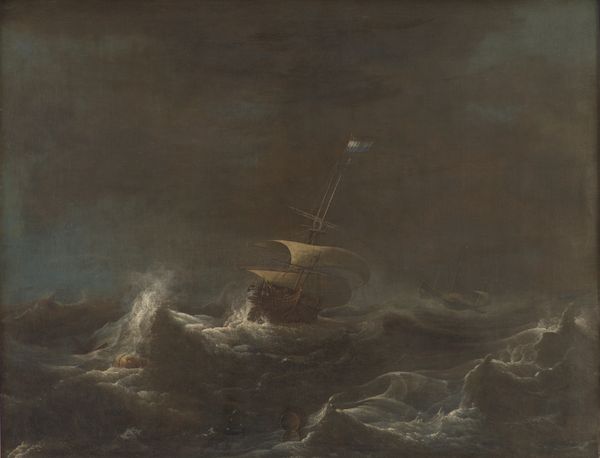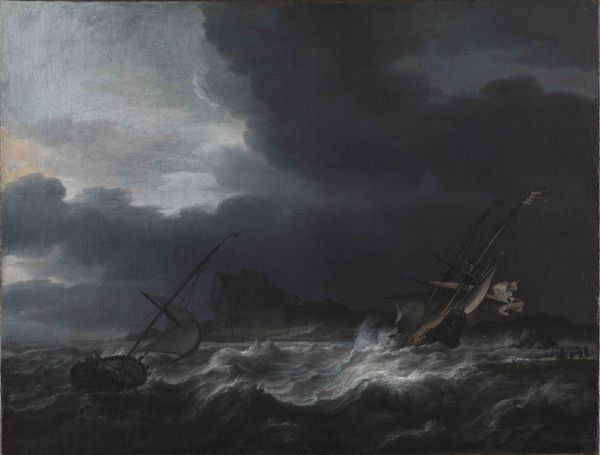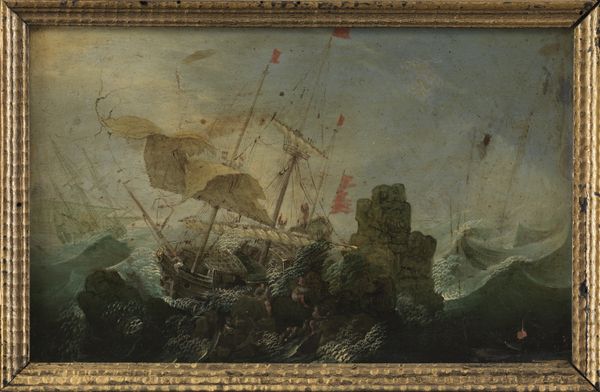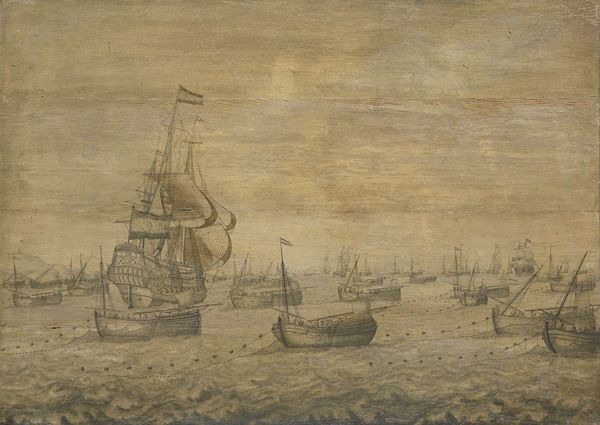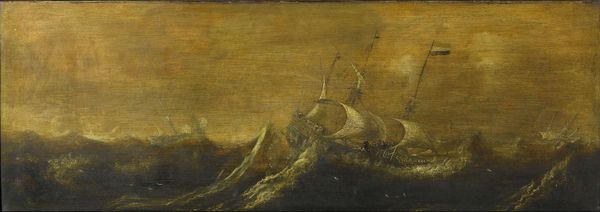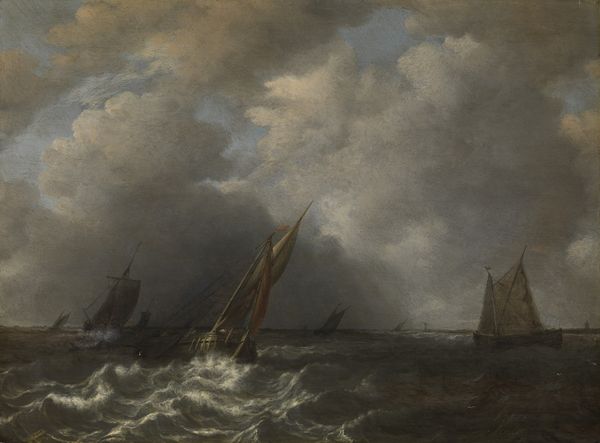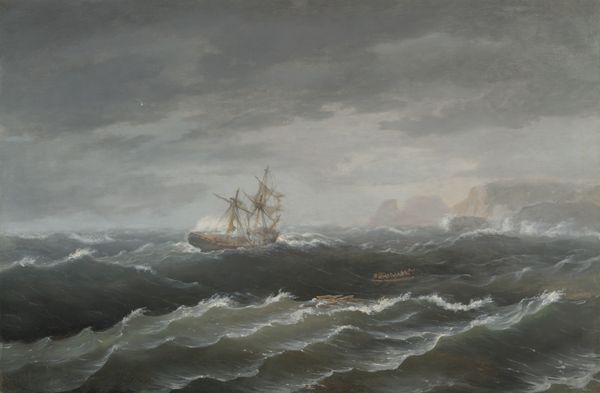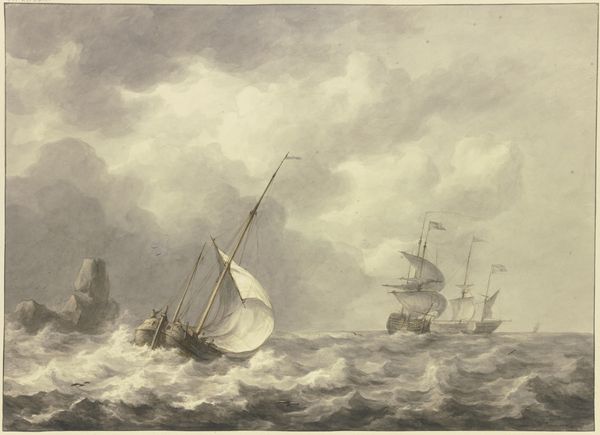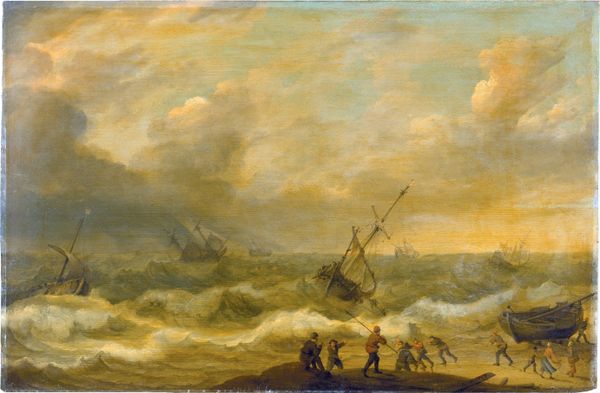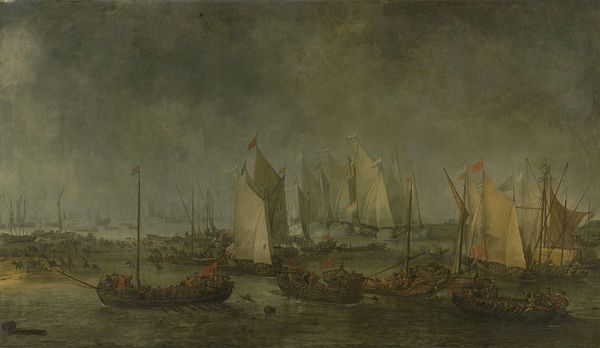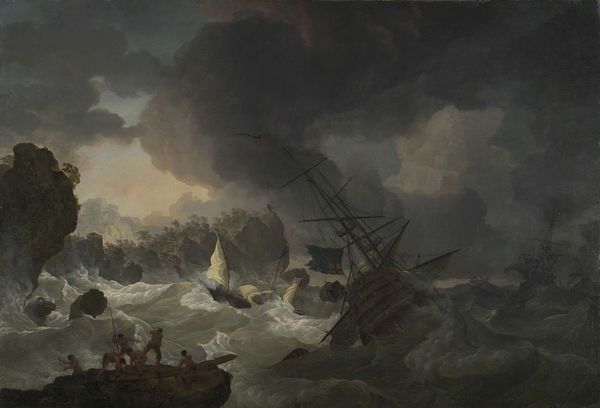
painting, oil-paint
#
narrative-art
#
baroque
#
dutch-golden-age
#
painting
#
oil-paint
#
landscape
#
genre-painting
#
history-painting
#
realism
Dimensions: support height 64.5 cm, support width 85.2 cm
Copyright: Rijks Museum: Open Domain
Curator: Looking at "Shipwreck off a Rocky Coast," painted by Adam Willaerts in 1614, now residing here at the Rijksmuseum, what first springs to mind? Editor: Utter chaos! It feels like being tossed around in a washing machine, only much, much colder. There’s a wildness to the scene, but also… a certain romance? The sheer drama of it all, you know? Curator: Precisely! Willaerts was working during the Dutch Golden Age, and his seascapes weren't simply depictions of maritime events; they were often loaded with symbolic meaning. This piece captures the vulnerability of human ambition against the raw power of nature, perhaps reflecting the tumultuous political and economic climate of the time. We are seeing narrative and history painting conventions at play here. Editor: I get that. You can almost feel the precarity of the ship's passengers— are they trading nations about to sink or ordinary travellers thrown at nature's whim? The light does hint to this sublime, a fearful admiration and acceptance of what can not be controlled. I feel like there’s a story being played out here beyond just the wreckage, you know? Something deeply personal… perhaps about the anxieties of an artist. Curator: It is likely so, Adam Willaerts had connections with other notable seascape artists of the period such as Hendrick Cornelisz Vroom and Jan Porcellis. As seafaring and trade were vital to Dutch prosperity, such imagery could also serve as cautionary tales. Note how even amidst the chaos, there’s a distinct hierarchy presented - look at the class dynamics among those struggling to survive. Editor: Yes, yes! Like in real life: someone is always doing better than you, and sometimes someone is having the worst time, right there! And you almost have to just stand by and see how they swim or drown. Harsh! Curator: The color palette adds to the drama as well; mostly grays and browns accentuate the storm's dreariness, yet subtle highlights give dimension to the cresting waves, and that adds an exquisite feeling of movement, as if the sea breathes. Editor: Oh absolutely, you’re totally right. It makes you wonder, what happened to everyone aboard? Did anyone make it out alive? It almost feels a bit… voyeuristic? Like we're spying on a very personal disaster, a tragedy but at arm's length. That's the punch to the gut, right? Curator: It is art reflecting life. Next, perhaps, we should ponder what is truly reflected beyond these immediate visceral reactions when we examine such art. Editor: Sure, but I would just hope that someone sent a rowboat and a safety line for this sad crew here!
Comments
rijksmuseum about 2 years ago
⋮
Those who went to sea played roulette with their lives. The wooden ships were small and fragile, and the very real dangers were exaggerated with horror stories of hideous creatures living in the unfathomable depths. Willaerts created an image of every seaman’s worst nightmare. One ship has been dashed on the rocks, and the other two are heeling over. The survivors at centre are threatened by a monstrous fish.
Join the conversation
Join millions of artists and users on Artera today and experience the ultimate creative platform.
